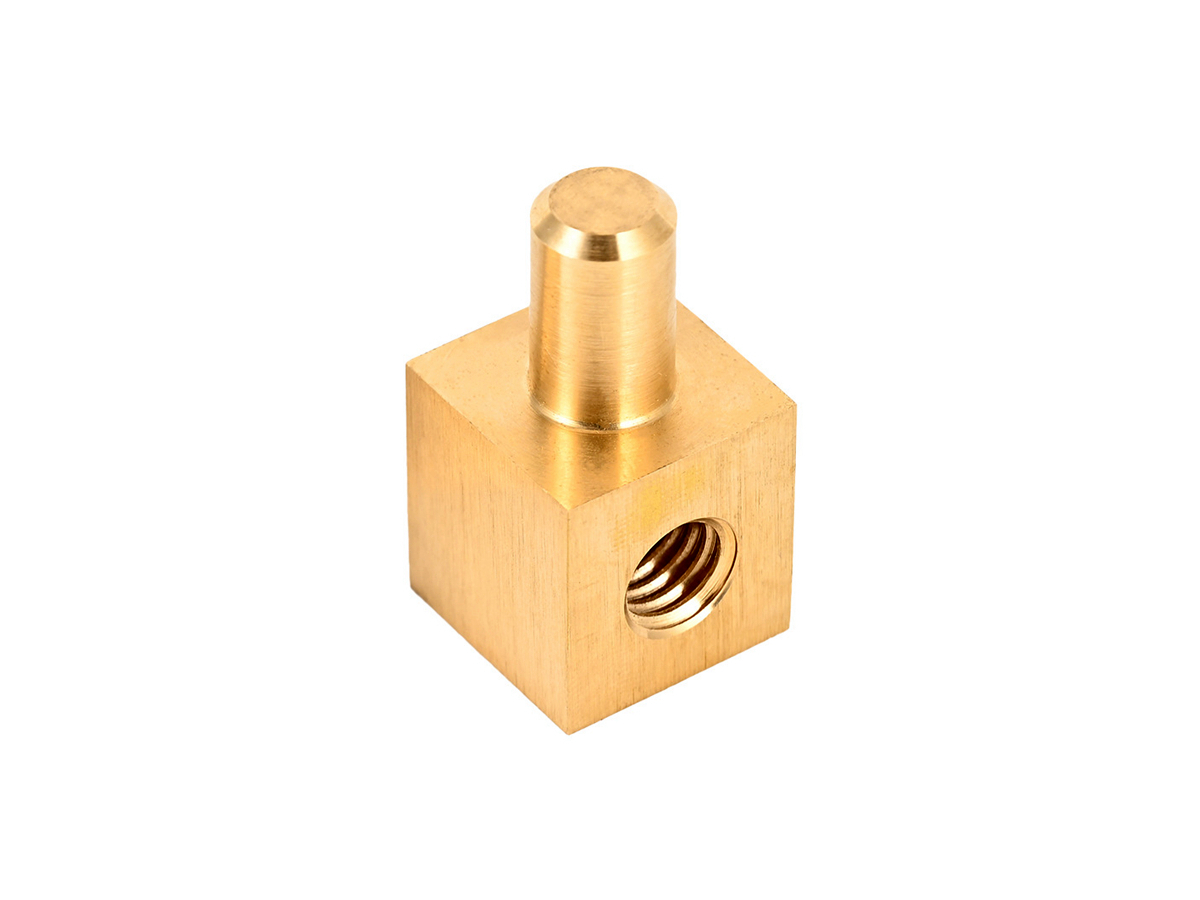Brass and Bronze in Consumer Products: Exploring Multi-Axis CNC Machining Solutions
Introduction
The consumer products industry requires precision-crafted components that deliver durability, aesthetics, and exceptional functionality. Brass and bronze are prominent materials in consumer goods manufacturing. They are favored for their attractive appearance, superior machinability, and excellent corrosion resistance, making them ideal for decorative hardware, electronic fittings, plumbing fixtures, and precision parts.
Advanced multi-axis CNC machining enables manufacturers to efficiently achieve complex designs, precise tolerances, and superior surface finishes. Leveraging multi-axis machining for brass and bronze components significantly enhances product quality, production efficiency, and overall market competitiveness.
Brass and Bronze Materials
Material Performance Comparison
Material | Tensile Strength (MPa) | Yield Strength (MPa) | Machinability Rating | Typical Applications | Advantage |
|---|---|---|---|---|---|
345-470 | 125-310 | Excellent (100%) | Decorative hardware, fittings | Exceptional machinability, attractive appearance | |
345-500 | 130-350 | Very Good (90%) | Valves, locks, plumbing fixtures | Good corrosion resistance, reliable strength | |
586-655 | 241-448 | Good (60%) | Gears, bushings, bearings | High mechanical strength, superior wear resistance | |
380-480 | 125-365 | Good (70%) | Springs, connectors, fasteners | Excellent fatigue resistance, good formability |
Material Selection Strategy
Choosing appropriate brass and bronze materials involves careful evaluation of application demands and performance criteria:
Brass C360 (machinability rating 100%) offers ideal properties for high-volume decorative hardware and fittings demanding exceptional machinability and aesthetics.
Components such as plumbing fixtures and valves exposed to corrosive environments benefit from Brass C385, offering enhanced corrosion resistance (ASTM B117 test exceeding 600 hours) and strength up to 500 MPa.
Heavy-duty components subject to high mechanical stresses and abrasive wear, such as gears and bearings, are ideally manufactured from C95400 Aluminum Bronze due to their high tensile strength (~655 MPa) and excellent wear resistance.
Precision electrical connectors, springs, and components requiring good fatigue resistance and formability are optimally produced from C51000 Phosphor Bronze, which offers a tensile strength of up to 480 MPa and reliable fatigue durability.
CNC Machining Processes
Process Performance Comparison
Multi-Axis CNC Machining Technology | Dimensional Accuracy (mm) | Surface Roughness (Ra μm) | Typical Applications | Key Advantages |
|---|---|---|---|---|
±0.02 | 1.6-3.2 | Simple brackets, decorative plates | Economical for straightforward geometries | |
±0.015 | 0.8-1.6 | Curved decorative hardware, fittings | Enhanced accuracy, fewer machining setups | |
±0.005 | 0.4-0.8 | Complex shapes, intricate fittings | Superior precision, exceptional surface quality | |
±0.003-0.01 | 0.2-0.6 | Complex decorative components, precision parts | Maximum precision, highly intricate geometries |
Process Selection Strategy
The selection of CNC machining methods for brass and bronze in consumer products depends on specific component complexity and accuracy requirements:
Components requiring basic geometry, economical machining, and moderate accuracy (±0.02 mm): 3 Axis CNC Milling is the most cost-effective.
Decorative hardware with curved surfaces and moderate complexity: 4 Axis CNC Milling improves accuracy (±0.015 mm) and reduces setup time.
Intricately detailed fittings and decorative parts requiring high accuracy (±0.005 mm) and excellent surface finish (Ra ≤0.8 μm): 5 Axis CNC Milling offers precision and finishing quality.
Extremely detailed, precision-critical consumer components with strict tolerances (±0.003 mm): Precision Multi-Axis CNC Machining ensures precise geometries and exceptional repeatability.
Surface Treatment
Surface Treatment Performance
Treatment Method | Corrosion Resistance | Wear Resistance | Appearance Stability | Typical Applications | Key Features |
|---|---|---|---|---|---|
Excellent (≥800 hours ASTM B117) | High (HV400-800) | Excellent | Decorative hardware, plumbing fittings | Enhanced aesthetics, durable finish | |
Good (400-600 hours ASTM B117) | Moderate | Good | Decorative items, fixtures | Maintains original metallic appearance, moderate protection | |
Outstanding (>1000 hours ASTM B117) | Very High (HV1500-2500) | Excellent | Luxury fittings, high-wear decorative parts | Exceptional durability, superior aesthetic quality | |
Excellent (700-900 hours ASTM B117) | Moderate | Excellent | High-end fittings, electrical contacts | Ultra-smooth finish, corrosion resistant |
Surface Treatment Selection
Selecting suitable surface treatments involves assessing environmental exposure, aesthetic requirements, and durability expectations:
High-end decorative hardware and plumbing fittings requiring superior corrosion resistance (>800 hours ASTM B117) and aesthetic appeal: Electroplating is ideal, offering an attractive and durable surface.
Brass decorative items needing preservation of original metallic appearance with moderate protection (400-600 hours ASTM B117): Clear Coating provides optimal aesthetic preservation.
Luxury components subject to significant wear requiring extraordinary surface hardness (HV1500-2500) and corrosion resistance (>1000 hours ASTM B117): PVD Coating ensures premium aesthetics and longevity.
Precision electrical contacts, high-end fittings demanding smooth surfaces (Ra ≤0.4 μm), and corrosion resistance: Electropolishing enhances performance and durability.
Quality Control
Quality Control Procedures
Dimensional verification using Coordinate Measuring Machines (CMM) and optical comparators.
Surface roughness testing via precision profilometers.
Mechanical property verification, including tensile and yield strength, according to ASTM standards.
Corrosion resistance evaluation through ASTM B117 (Salt Spray Testing).
Visual inspections for aesthetic quality and surface uniformity.
Documentation adhering to ISO 9001 and relevant consumer products industry standards.
Industry Applications
Brass and Bronze Applications
Decorative hardware: handles, knobs, luxury fittings.
Plumbing fixtures: valves, faucets, connectors.
Electrical fittings and precision components for consumer electronics.
Mechanical parts: gears, bushings, bearings, fasteners.
Related FAQs:
Why are brass and bronze popular in consumer products manufacturing?
How does multi-axis CNC machining improve brass and bronze component quality?
Which surface treatments best enhance the durability of decorative brass and bronze items?
What quality standards are critical for CNC-machined brass and bronze components?
How do you select suitable brass or bronze alloys for specific consumer product applications?

